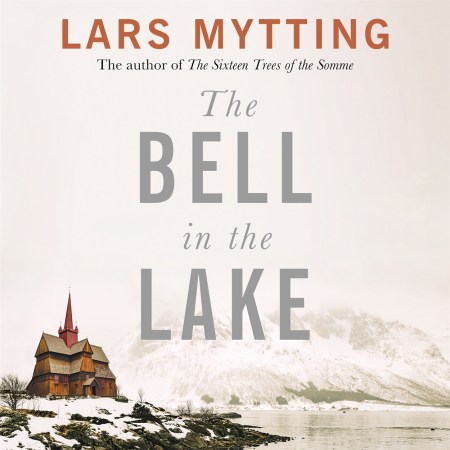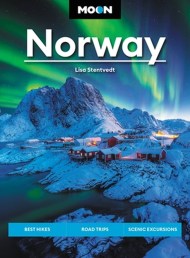
The Bell in the Lake
On sale
13th May 2020
Price: £25
“Love, suspense, nature and superstition are woven together in this powerful novel” MAJA LUNDE, author of The History of Bees
“An exquisitely atmospheric novel . . . The Bell in the Lake does what fiction promises: to steal you away to another world and ask you, if unfairly, to leave a little of your heart behind” DEREK B. MILLER, author of Norwegian by Night
“Lyrical, melancholy and with beautifully drawn characters, this pitches old beliefs against new ways with a haunting delicacy that rings true.” DAILY MAIL
“Mytting uses the love story to explore the clash between tradition and modernity” THE TIMES (Historical Fiction Book of the Month)
The first in a rich historical trilogy that draws on legend, by a literary craftsman and the author of The Sixteen Trees of the Somme
Norway, 1880. Winter is hard in Butangen, a village secluded at the end of a valley. The lake has frozen, and for months the ground is too hard to bury the dead. Astrid Hekne dreams of a life beyond all this, beyond marriage, children, and working the land to the end of her days. Then Pastor Kai Schweigaard takes over the small parish, with its 700-year-old stave church carved with pagan deities. The two bells in the tower were forged by Astrid’s forefather in the sixteenth century, in memory of conjoined twins Halfrid and Gunhild Hekne. They are said to hold supernatural powers.
The villagers are wary of the pastor and his resolve to do away with their centuries-old traditions, though Astrid also finds herself drawn to him. And then a stranger arrives from Dresden, with grand plans for the church itself. For headstrong Astrid this may be a provocation too far.
Talented architecture student Gerhard Schönauer is an improbable figure in this rugged community. Astrid has never met anyone like him; he seems so different, so sensitive. She finds that she must make a choice: for her homeland and the pastor, or for an uncertain future in Germany.
Then the bells begin to ring . . .
“Rich, sinuous prose . . . a beautiful example of modern Norwegian folklore” GUARDIAN
Translated from the Norwegian by Deborah Dawkin
With the support of the Creative Europe Programme of the European Union
(P)2020 Quercus Editions Limited
“An exquisitely atmospheric novel . . . The Bell in the Lake does what fiction promises: to steal you away to another world and ask you, if unfairly, to leave a little of your heart behind” DEREK B. MILLER, author of Norwegian by Night
“Lyrical, melancholy and with beautifully drawn characters, this pitches old beliefs against new ways with a haunting delicacy that rings true.” DAILY MAIL
“Mytting uses the love story to explore the clash between tradition and modernity” THE TIMES (Historical Fiction Book of the Month)
The first in a rich historical trilogy that draws on legend, by a literary craftsman and the author of The Sixteen Trees of the Somme
Norway, 1880. Winter is hard in Butangen, a village secluded at the end of a valley. The lake has frozen, and for months the ground is too hard to bury the dead. Astrid Hekne dreams of a life beyond all this, beyond marriage, children, and working the land to the end of her days. Then Pastor Kai Schweigaard takes over the small parish, with its 700-year-old stave church carved with pagan deities. The two bells in the tower were forged by Astrid’s forefather in the sixteenth century, in memory of conjoined twins Halfrid and Gunhild Hekne. They are said to hold supernatural powers.
The villagers are wary of the pastor and his resolve to do away with their centuries-old traditions, though Astrid also finds herself drawn to him. And then a stranger arrives from Dresden, with grand plans for the church itself. For headstrong Astrid this may be a provocation too far.
Talented architecture student Gerhard Schönauer is an improbable figure in this rugged community. Astrid has never met anyone like him; he seems so different, so sensitive. She finds that she must make a choice: for her homeland and the pastor, or for an uncertain future in Germany.
Then the bells begin to ring . . .
“Rich, sinuous prose . . . a beautiful example of modern Norwegian folklore” GUARDIAN
Translated from the Norwegian by Deborah Dawkin
With the support of the Creative Europe Programme of the European Union
(P)2020 Quercus Editions Limited
Reviews
Lars Mytting's historical novel is captivating and engaging . . . With his powerful narrative style, intertwined story and detailed knowledge of carpentry, fishing and stave churches, there is reason to believe that this time he will again reach many many readers.
Magnificent historical novel
Love, suspense, nature and superstition are woven together in this powerful novel. Set in spectacular surroundings where anything can happen it will give the reader a taste of something deeply and genuinely Norwegian.
Lyrical, melancholy and with beautifully drawn characters, this pitches old beliefs against new ways with a haunting delicacy that rings true.
An exquisitely atmospheric novel about the struggle to cherish the beauty that is right in front of us; be it a blue-dark night, the bear-colored wood of a decaying stave church, or a love that is blooming through a late-thawing snow. The Bell in the Lake does what fiction promises: to steal you away to another world and ask you, if unfairly, to leave a little of your heart behind.
Mytting shows how landscape and climate can define a character . . . He delivers village wisdom . . . and jagged realism. It is a fireside read with splinters.
Mytting's cleverly crafted story heads inexorably to a moving conclusion
Mytting uses the love story to explore the clash between tradition and modernity
Rich, sinuous prose makes tangible the villagers' gritty perseverance in the face of poverty, isolation and the unpredictable climate . . . The Bell in the Lake is a beautiful example of modern Norwegian folklore
Lovers of good historical fiction are in for a real treat.













